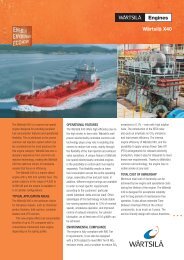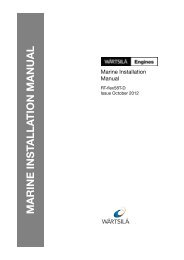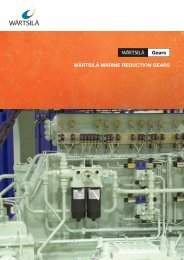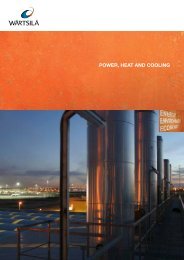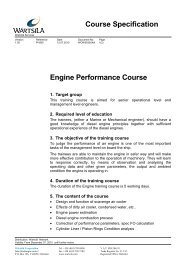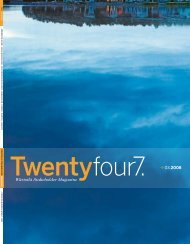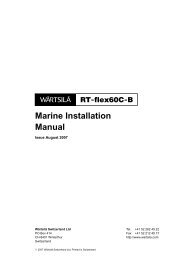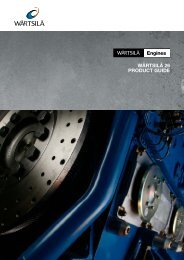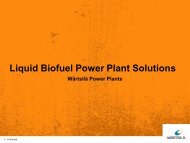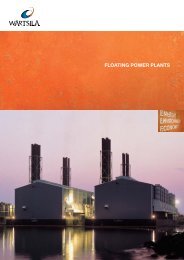Wärtsilä Controllable Pitch Propeller CPP
Wärtsilä Controllable Pitch Propeller CPP
Wärtsilä Controllable Pitch Propeller CPP
Create successful ePaper yourself
Turn your PDF publications into a flip-book with our unique Google optimized e-Paper software.
has a different hull form and for that reason<br />
different wake fields. All Wärtsilä propellers are<br />
wake-adapted and, in co-operation with the<br />
customer, both yard and owner, the propeller<br />
is designed for optimal performance in all<br />
operating conditions.<br />
The main features of the propeller design are:<br />
• Highest propulsive efficiency in all operating<br />
conditions<br />
• Excellent behaviour regarding cavitation,<br />
with no erosive types of cavitation<br />
• Lowest pressure pulse fluctuations on the<br />
hull to minimize noise and vibration levels<br />
on board.<br />
Wärtsilä controllable pitch propellers for all<br />
ship types guarantee maximum efficiency and<br />
minimum noise and vibration levels thanks to<br />
their tailor-made design and use of the latest<br />
state-of-the-art technology:<br />
• A special radial loading distribution is used<br />
to obtain high efficiency<br />
• Unloading of the blade tip minimizes<br />
cavitation and pressure pulses<br />
• Optimized blade profile sections are<br />
developed and used in the design and lead<br />
to better results regarding both cavitation<br />
behaviour and efficiency.<br />
Wärtsilä’s design experience covers many<br />
types of ships, varying from heavy-duty<br />
vessels like hopper dredgers to high-speed<br />
passenger ferries, and from small fishing<br />
boats to enormous oil platforms carriers. Our<br />
long history of designing propellers gives us<br />
extensive hydrodynamic knowledge and we<br />
have developed design tools based on a large<br />
number of model test results and full-scale<br />
measurements. Our research and development<br />
efforts are dedicated to continuously improving<br />
the hydrodynamic design of our propellers by:<br />
• Co-operation with well known research<br />
institutes and universities worldwide<br />
• Full-scale measurements<br />
• Simulation using Computational Fluid<br />
Dynamics (CFD).<br />
In order to fulfil the strength requirements of<br />
the propellers we perform Finite Element (FEM)<br />
analyses to check the blade strength properties<br />
of each blade design. Both fatigue strength and<br />
stresses in peak load conditions are checked.<br />
3




